Guyana, the Land of Many Waters, boasts a rich history shaped by remarkable leaders. Today, we embark on a journey through the tenures of past presidents, exploring their unique contributions and the lasting impact they’ve had on the nation. Buckle up, history buffs and curious minds, as we delve into the lives and legacies of these individuals:
1. Arthur Chung (1970-1976)
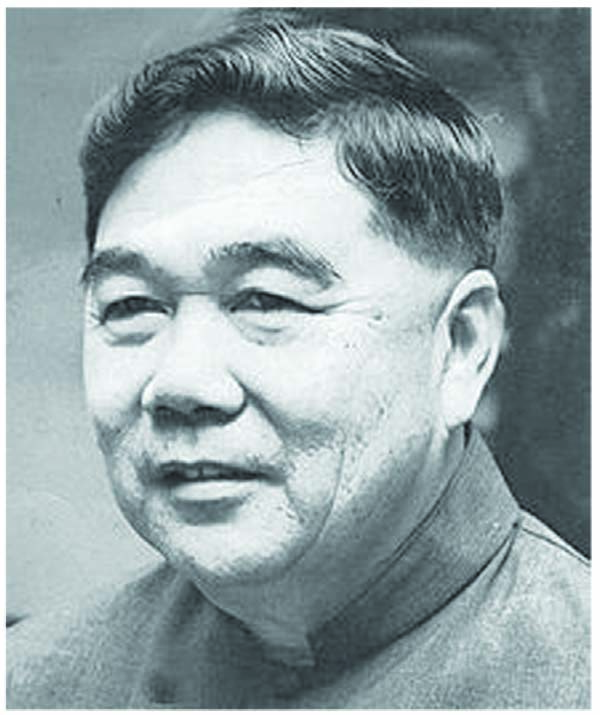
Former President of Guyana Arthur Chung
The first non-elected president, Chung ushered in the period of the Cooperative Republic. A respected judge and former governor, he navigated a complex political landscape and laid the groundwork for future governance. Arthur Raymond Chung, OE (10 January 1918 – 23 June 2008) was a Guyanese politician who was the 1st President of Guyana from 1970 to 1980. He was the first ethnic Chinese (Chinese Caribbean) to be head of state in a non-Asian country. A leader in Guyana’s fight for independence during the British colonial era, he was honoured with Guyana’s highest national honour, the Order of Excellence (O.E.).
2. L.F.S. Burnham (1978-1985)
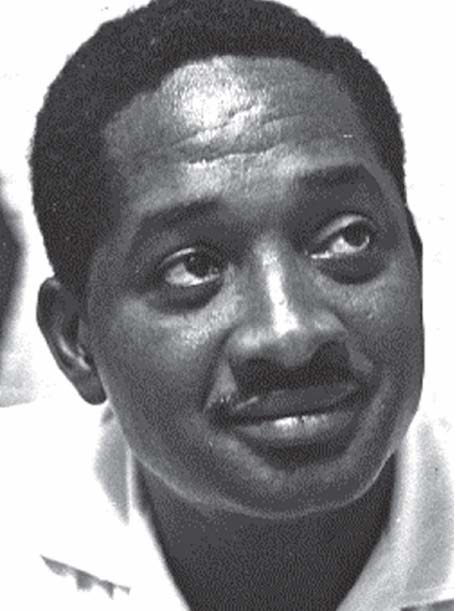
Former President of Guyana Linden Forbes Sampson Burnham
Linden Forbes Sampson Burnham OE (20 February 1923 – 6 August 1985) was a Guyanese politician and the leader of the Co-operative Republic of Guyana from 1964 until his death in 1985. He served as Premier of British Guiana from 1964 to 1966, Prime Minister of Guyana from 1964 to 1980 and then as the first Executive President of Guyana (2nd President overall) from 1980 to 1985. He is often regarded as a strongman[4] who embraced his own version of socialism.
A charismatic and controversial figure, Burnham implemented socialist policies aiming for economic self-sufficiency. His legacy remains multifaceted, marked by both advancements in education and infrastructure, and accusations of authoritarian rule.
3. Hugh Desmond Hoyte (1985-1992)
Hoyte succeeded Burnham and oversaw a period of political and economic liberalization. He introduced multi-party elections and market reforms, paving the way for a more democratic future.
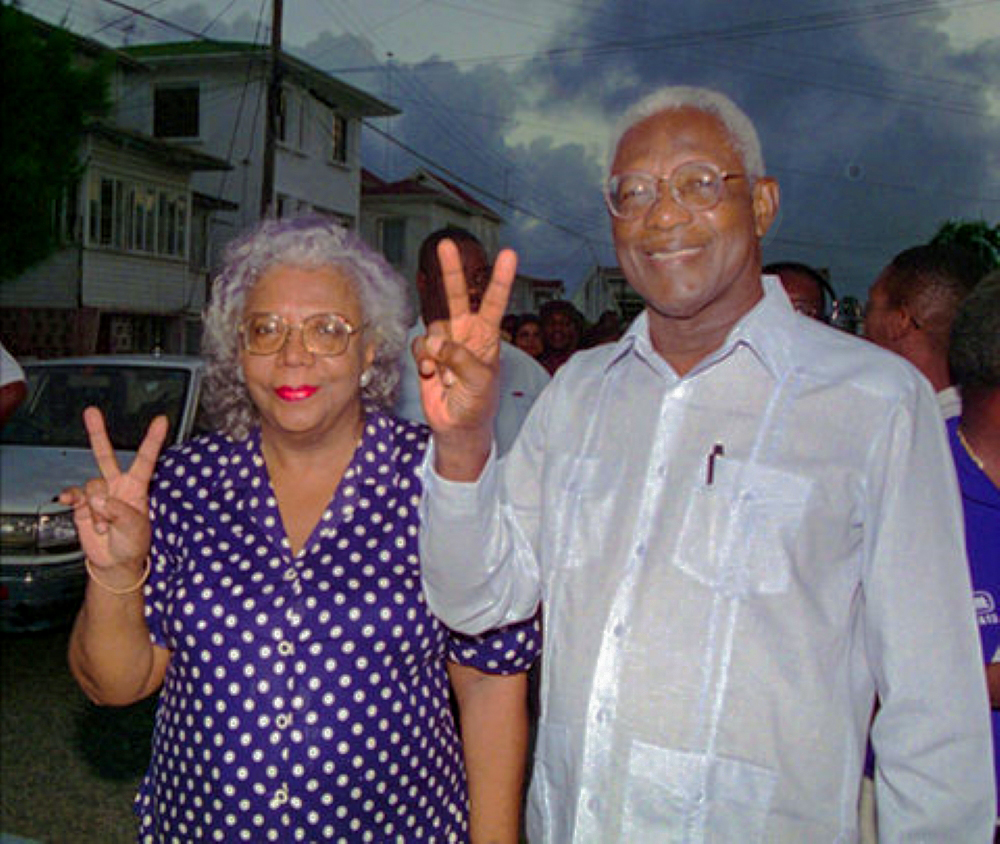
Former President Desmond Hoyte and wife, Joyce Hoyte – Photo By People’s National Congress
Hugh Desmond Hoyte (9 March 1929 – 22 December 2002) was a Guyanese politician who served as Prime Minister of Guyana from 1984 to 1985 and President of Guyana from 1985 until 1992. Hoyte was born on 9 March 1929 to a middle-class family in Georgetown, the capital of British Guiana. He was educated at St Barnabas Anglican School and Progressive High School. In 1948, he joined the civil service, then entered public service as a teacher in Guyana and Grenada. While he was working, Hoyte earned an external B.A. from the University of London in 1950. In 1957, he went to the UK to pass his bar exams at the Middle Temple and earn an LL.B., which he received in 1959. In 1960 he joined the same law practice as Forbes Burnham (Clarke and Martin), before setting up private practice and became one of the leaders of the Guyana Bar Association. He would come to serve as a legal advisor to the Guyana Trades Union Congress. In 1962, he was appointed as a member of the General Council of the People’s National Congress. In 1966, he was appointed to the National Elections Commission, which supervised the 1968 Guyanese general election.
4. Cheddi Jagan (1992-1997)
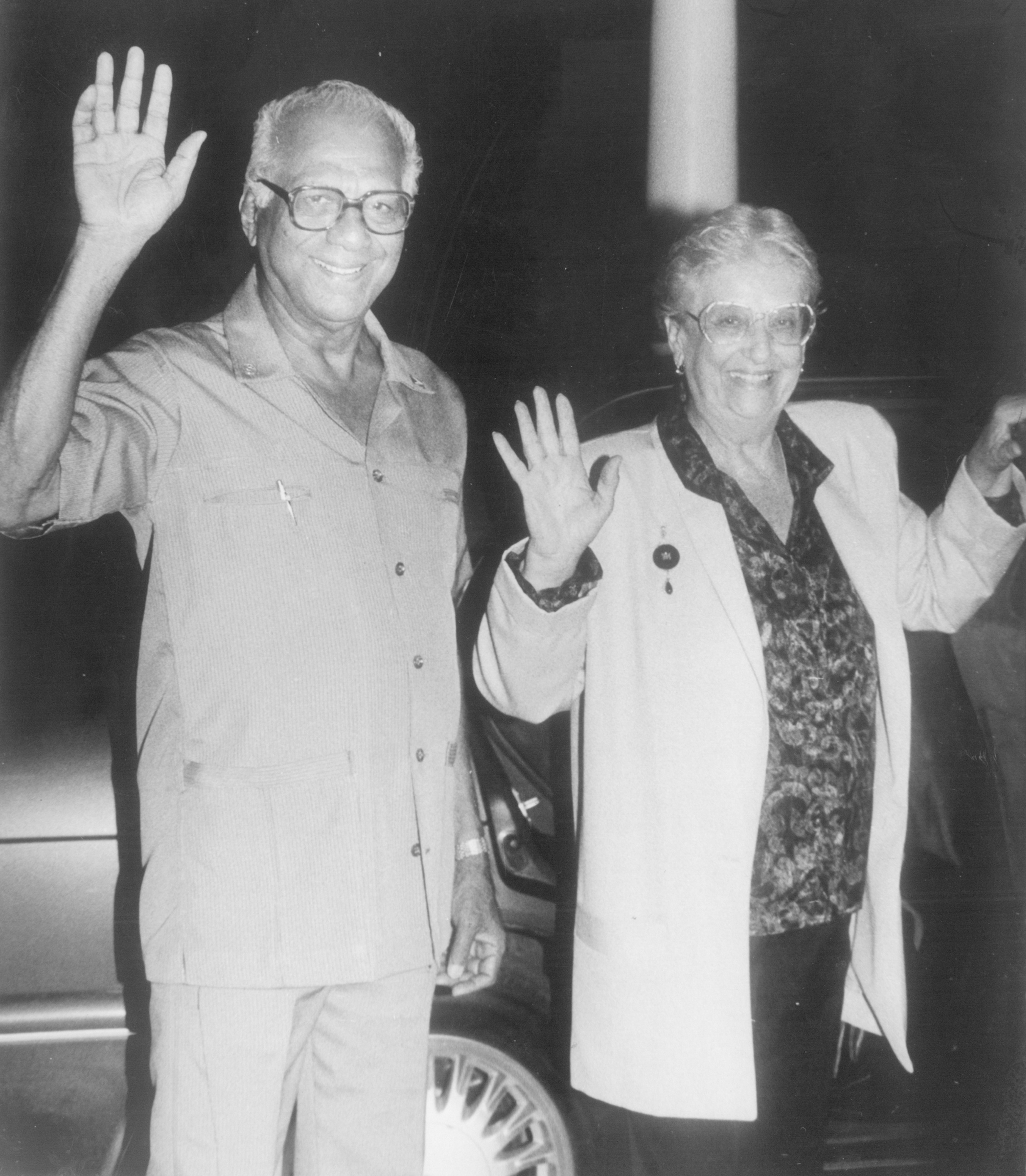
Cheddi and Janet Jagan, former presidents of Guyana
Cheddi Berret Jagan (22 March 1918 – 6 March 1997) was a Guyanese politician and dentist who was first elected Chief Minister in 1953 and later Premier of British Guiana from 1961 to 1964. He later served as President of Guyana from 1992 to his death in 1997. In 1953, he became the first Hindu and person of Indian descent to be a head of government outside of the Indian subcontinent.
Jagan founded the People’s Progressive Party along with his wife Janet and Forbes Burnham, and served as the first leader of the party. Jagan was a leading figure in the campaign for the independence of Guyana from the United Kingdom, and advocated for increased powers for trade unions at a time when British Guiana’s economy was dominated by powerful foreign enterprises. Jagan lost his position as Prime Minister to Forbes Burnham following the 1964 British Guiana general election, and Burnham would become Guyana’s first Head of Government following independence. Twenty-eight years later, Jagan was elected president in the 1992 Guyanese general election, which was regarded as the first “free and fair” election since 1964.
A renowned figure in Guyanese politics, Jagan’s return to power marked a significant shift. He focused on social development and poverty reduction, leaving a lasting mark on the nation’s social fabric.
5. Samuel Hinds (1997-1997)
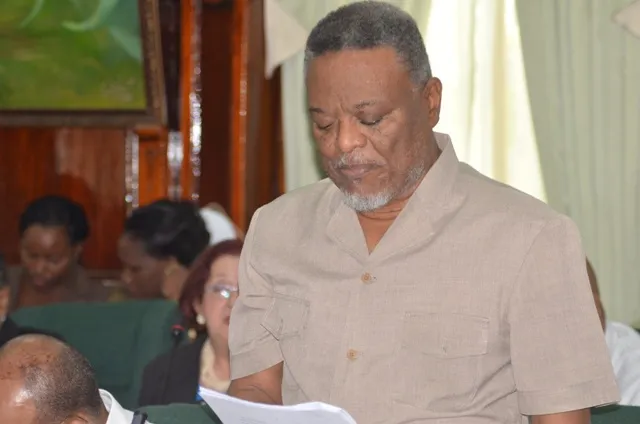
Former president of Guyana Samuel Hinds
Samuel Archibald Anthony Hinds (born 27 December 1943) is a Guyanese politician who was Prime Minister of Guyana almost continuously from 1992 to 2015. He also briefly served as President of Guyana in 1997. He was awarded Guyana’s highest national award, the Order of Excellence (O.E.) in 2011. As Prime Minister, Hinds assumed the presidency after Jagan’s death. He continued Jagan’s social programs and oversaw a period of relative stability amidst political challenges.
6. Janet Jagan (1997 – 1999)
Janet Rosenberg Jagan OE (née Rosenberg; 20 October 1920 – 28 March 2009) was an American-born Guyanese politician who served as the President of Guyana, serving from December 19, 1997, to August 11, 1999. She was the first female president of Guyana. She previously served as the first female Prime Minister of Guyana from March 17, 1997, to December 19, 1997. The wife of Cheddi Jagan, whom she succeeded as president, she was awarded Guyana’s highest national award, the Order of Excellence, in 1993, and the UNESCO Mahatma Gandhi Gold Medal for Women’s Rights in 1998.
7. Bharrat Jagdeo (1999-2011)
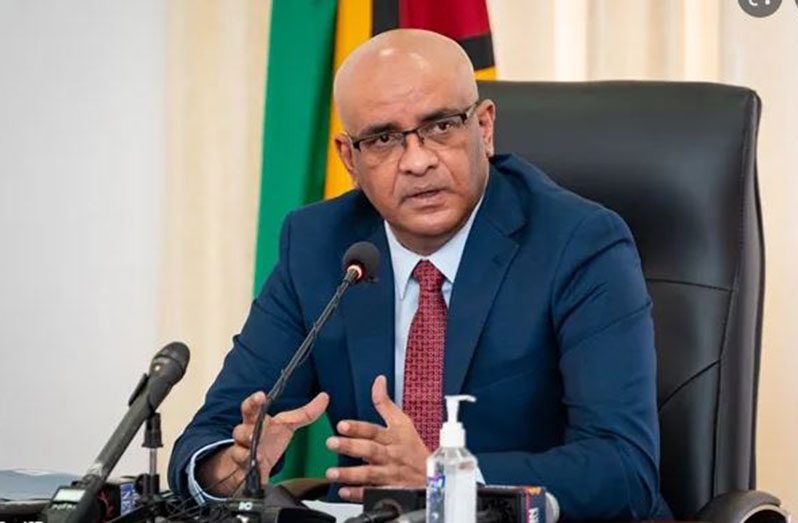
Former president of Guyana Bharat Jadeo
The youngest president in Guyana’s history, Jagdeo oversaw substantial economic growth. His tenure was marked by debt reduction, infrastructure development, and investments in education and healthcare. However, criticisms regarding resource management and press freedom also emerged. Bharrat Jagdeo (born 23 January 1964) is a Guyanese politician who has been serving as Vice President of Guyana since 2020, in the administration of President Irfaan Ali. He had previously also held the office from 1997 until 1999, during the presidency of Janet Jagan. Jagdeo subsequently served as the President of Guyana from 11 August 1999 to 3 December 2011.
He also holds a number of global leadership positions in the areas of sustainable development, green growth and climate change.
8. Donald Ramotar (2011-2015)
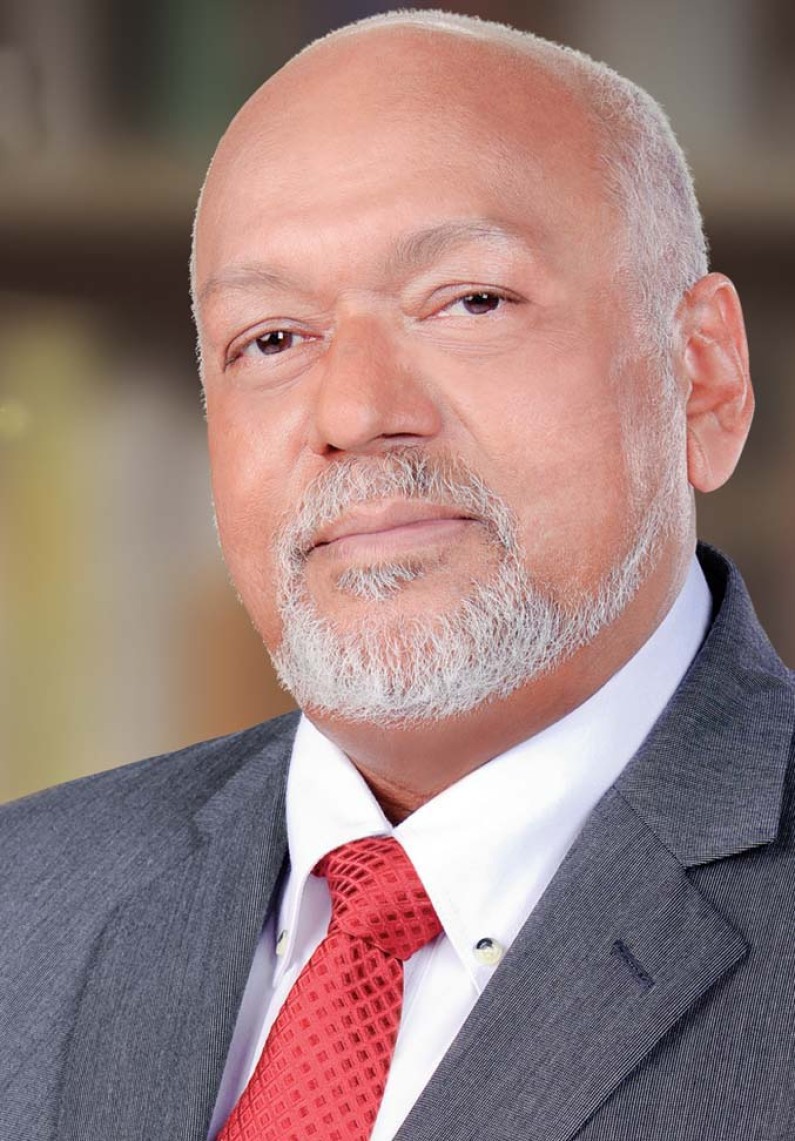
Former president of Guyana Donald Romotar
Ramotar joined the PPP in 1967 and was first elected to the PPP Central Committee in 1979; he joined the PPP Executive Committee in 1983. He received a certificate in welding from the Government Technical Institute (GTI). From 1988 to 1993, he was the International Secretary of the Guyana Agricultural Workers’ Union. In the 1992 election, in which the PPP under Cheddi Jagan won power for the first time in decades, Ramotar was elected to the National Assembly of Guyana; he was continuously re-elected thereafter. He was designated as the PPP’s Executive Secretary in 1993. Following Jagan’s death in March 1997, Ramotar was unanimously elected to succeed him as the PPP’s General Secretary on March 29, 1997.
Continuing Jagdeo’s policies, Ramotar focused on infrastructure development and social programs. However, economic slowdown and political divisions presented challenges during his presidency.
9. David Granger (2015-2020)
A retired Brigadier General, Granger’s presidency marked a return to power for the opposition party. He focused on national unity, corruption reduction, and improved relations with foreign nations. David Arthur Granger (born 15 July 1945) is a Guyanese former politician and retired military officer who served as the ninth president of Guyana from 2015 to 2020. A member of the People’s National Congress (PNC), he previously served as Commander of the Guyana Defence Force and as National Security Adviser from 1990 to 1992.
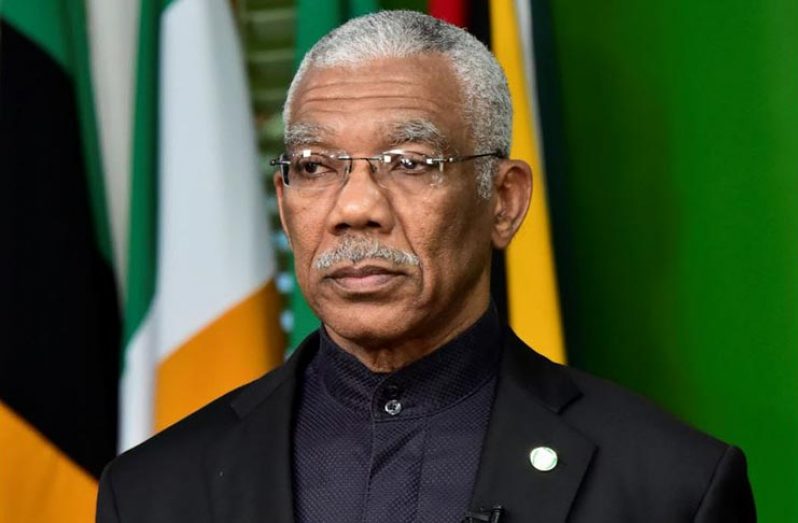
Former President of Guyana David Granger
He was the leader of the Opposition in the National Assembly of Guyana from 2012 to 2015.
10. Irfaan Ali (2020-present)
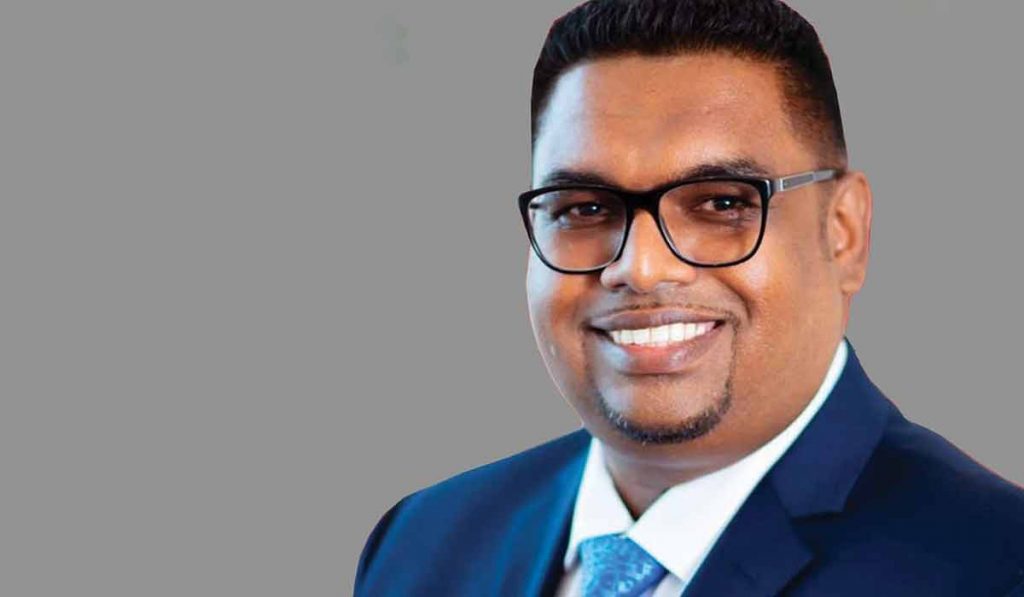
Dr. Mohamed Irfaan Ali, current president of Guyana.
Mohamed Irfaan Ali (born 25 April 1980) is a Guyanese politician serving as the tenth and current president of Guyana since 2020 (9th Executive President). A member of the People’s Progressive Party/Civic (PPP/C), he previously served as the minister of Housing and Water from 2009 to 2015. He is the first Muslim to hold office and is the second Muslim head of state in the Americas after Noor Hassanali of Trinidad and Tobago.
Elected amidst political uncertainties, Ali faces the critical task of navigating economic recovery, addressing social inequalities, and fostering national unity. His presidency unfolds with much anticipation for the future of Guyana.
Exploring the Nuances:
It’s important to remember that each president’s legacy is complex and multifaceted. Their achievements and shortcomings are woven into the fabric of Guyana’s history, shaping the nation’s present and influencing its future trajectory.
Join the Conversation:
Who among these presidents has left the most significant mark on you? What are your thoughts on their leadership styles and the impact they’ve had on Guyana? Share your perspectives and engage in a respectful dialogue in the comments below!

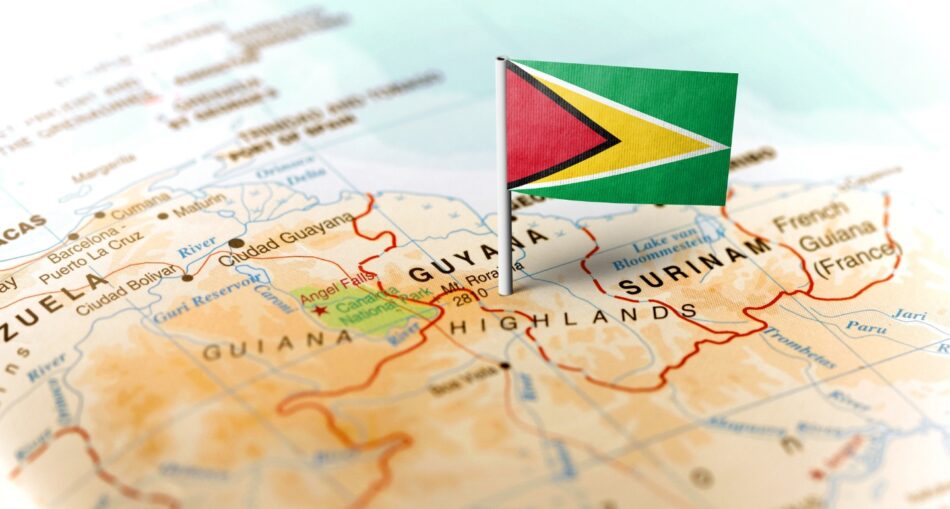
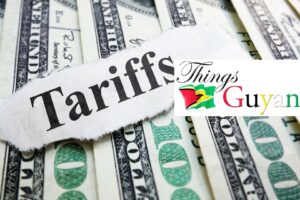





1 Comment
Wow this is so interesting. I couldn’t recall Mrs. Jagan, nor Mr. Hinds as presidents